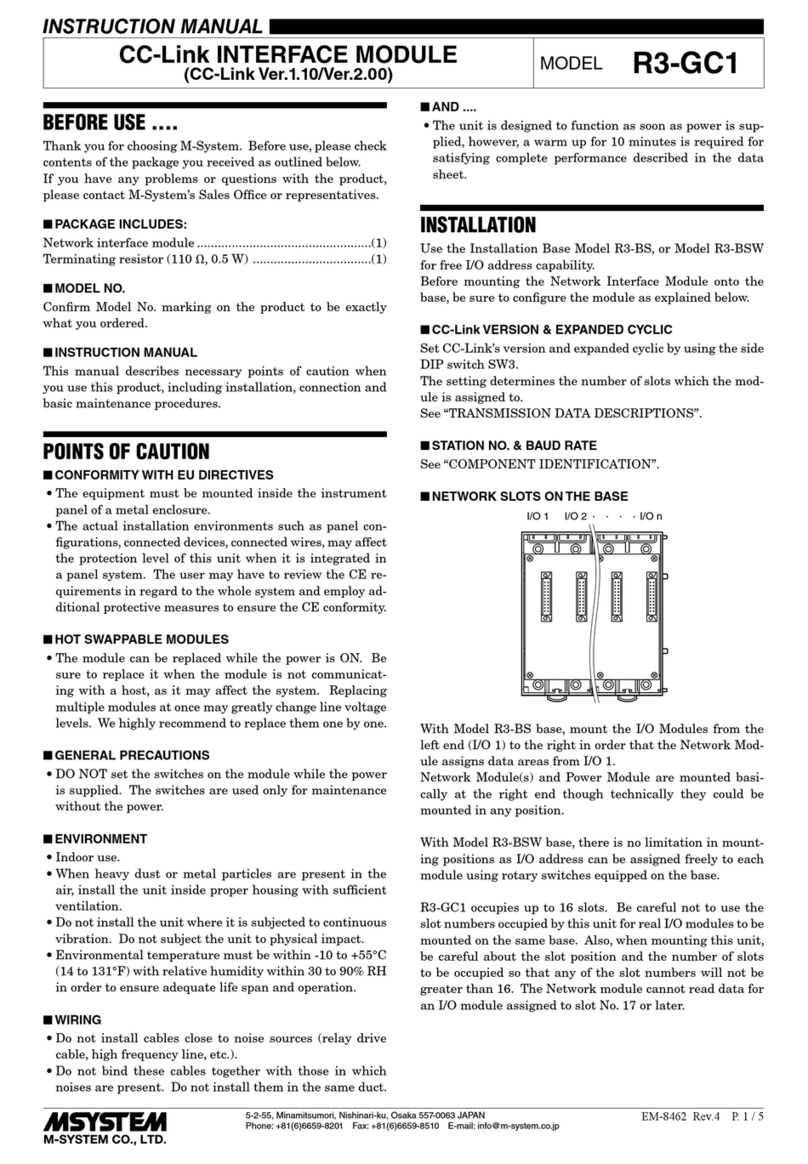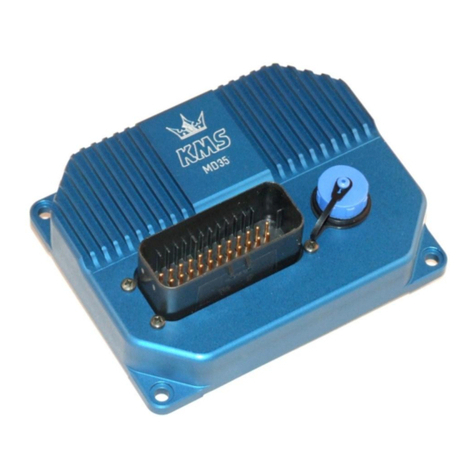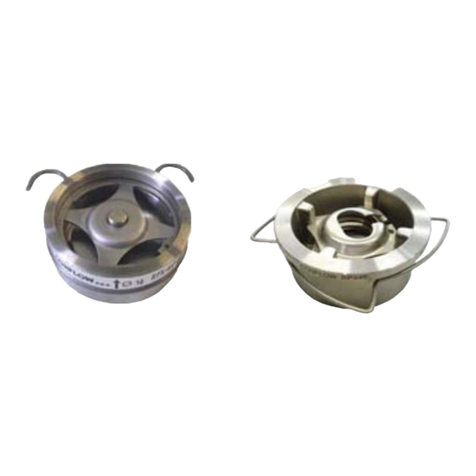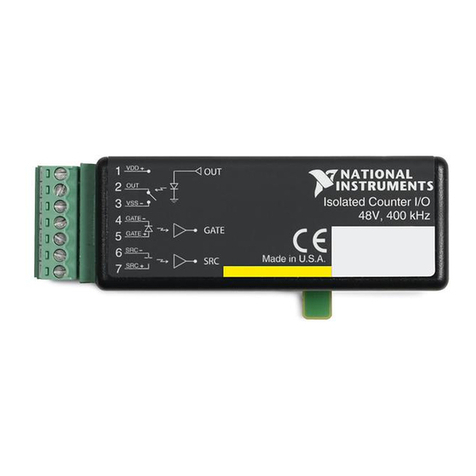Bennett PULSER User manual

Bennett 1218 E. Pontaluna Road, Spring Lake, MI 49456
USA 800-235-7618 ~ Outside USA 231-798-1310
sales@bennettpump.com ~ www.bennettpump.com
BENNETT PULSER ASSEMBLY
Manual
143798 Rev A 12/02/2020
Only Trained Personnel May Work on This Equipment
READ THIS MANUAL
This manual has important information for safe installation and operation of this equipment. Read and understand this manual before
applying power. Keep this manual and tell all service personnel to read this manual. If you do not follow the instructions, you can cause
bodily injury, death, or damage to the equipment.

Bennett 1218 E. Pontaluna Road, Spring Lake, MI 49456
USA 800-235-7618 ~ Outside USA 231-798-1310
sales@bennettpump.com ~ www.bennettpump.com
The material included in this installation manual is accurate at the date of publication. The intent of this manual is to assist.
If further assistance is required, please contact the Bennett Technical Service Department at 1-800-423-6638.
Bennett Marketing Services can be contacted by mail, facsimile, telephone or e-mail at the locations specified below:
Bennett Pump Company
Marketing Services
1218 East Pontaluna Road
Spring Lake, MI 49456
Telephone from USA 1-800-235-7618
Telephone from outside USA 231-798-1310, Extension 287 or 269
Customer Service USA 231-719-6050; Facsimile USA 231-799-6202
Website: www.bennettpump.com
For new manuals, visit our web page at www.bennettpump.com
IMPORTANT
Examine the shipment immediately upon arrival to make certain there has been no damage or loss in transit. Bennett
Pump Company, as shipper, is not liable for the hazards of transportation. Please make damage claims directly to the
truck line.
NOTICE: This device complies with part 15 of the FCC rules. Operation is subject to the following two conditions: (1) This
device may not cause harmful interface, and (2) this device must accept interference received, including interference that
may cause undesired operation.
Revision
Date
Description
0
8/26/20
Original Document

Bennett Pulser Assembly Instruction Manual Table of Contents
i
TABLE OF CONTENTS
TABLE OF CONTENTS I
SECTION 1: SAFETY INFORMATION 3
General Information..........................................................................................................................................................................................................................4
Hazardous locations..........................................................................................................................................................................................................................4
Codes and Standards........................................................................................................................................................................................................................4
Unauthorized Alteration of Bennett Products .......................................................................................................................................................................4
Abbreviations and Acronyms........................................................................................................................................................................................................4
SECTION 2: PRODUCT INTRODUCTION 5
Features..................................................................................................................................................................................................................................................5
Specifications .......................................................................................................................................................................................................................................5
Pulser Assembly..................................................................................................................................................................................................................................6
SECTION 3: INSTALLATION INSTRUCTIONS 9
How to Remove Pulser Cover .......................................................................................................................................................................................................9
How To Mount the Pulser Assembly..........................................................................................................................................................................................9
How to Connect Pulsers ..................................................................................................................................................................................................................9
How to Operate the Pulser .........................................................................................................................................................................................................11
SECTION 4: DIAGNOSTICS & TROUBLESHOOTING 12
Diagnostics......................................................................................................................................................................................................................................... 12
Troubleshooting ..............................................................................................................................................................................................................................12
How To Place an Order for Parts .............................................................................................................................................................................................. 12
SECTION 5: WIRING DIAGRAMS 14

Bennett Pulser Assembly Instruction Manual Table of Contents
ii
Page Intentionally Left Blank

Bennett Pulser Assembly Instruction Manual Safety Information
3
SECTION 1: SAFETY INFORMATION
For safe installation of this equipment, read and understand all dangers, warnings, and cautionary information. Save this safety information
in a readily accessible location. Look for the following warnings throughout the manual:
Red and White “DANGER” means: If you do not follow the instructions, severe injury or death will occur.
Orange and Black “WARNING” means: If you do not follow the instructions, severe injury or death can occur.
Yellow and Black “CAUTION” means: If you do not follow the instructions, damage can occur to the dispenser.
Blue and White “IMPORTANT” means: Helpful tips and other recommendations on equipment installation, usage, and maintenance
should be observed.
DANGER PELIGRO DANGER
FIRE, EXPLOSION, INJURY, OR DEATH WILL OCCUR IF FUEL FILTERS ARE CHANGED BY UNTRAINED PERSONNEL.
MAKE SURE, ONLY TRAINED PERSONNEL CHANGE FILTERS.
TO PREVENT INJURY TO YOU FROM VEHICLES AND ONLOOKERS, ALWAYS PLACE A BARRIER AROUND THIS
EQUIPMENT BEFORE PERFORMING SERVICE OR MAINTENANCE.
GASOLINE AND FUEL ETHANOL IS FLAMMABLE. NO SMOKING OR OPEN FLAME.
FUEL ETHANOL IS POISONOUS AND SHOULD NOT BE INGESTED.
DISCONNECT ALL POWER, RELIEVE PRESSURE TO THIS EQUIPMENT, AND ASSOCIATED COMPRESSOR DURING
INSTALLATION, SERVICE, OR ANY MAINTENANCE I.E., CHANGING FILTERS.
WARNING ADVERTENCIA MISE EN GARDE
You must have training in the installation, service, or maintenance of this equipment (dispenser, pump, console,
control box, or submerged pump) before working on it. Maintenance repairs must be done by authorized personnel
only. Warranty work may only be performed by Bennett certified technicians.
To prevent electric shock, keep the electrical parts of the dispenser dry.
Electronic components are static sensitive. Use only proper static precautions (e.g. static straps) before working on
the equipment.
The emergency shut-off valve (also called the fire valve, shear valve, or impact valve) must be closed when service
or maintenance is performed on this equipment.
You must have training in the operation and programming of this dispenser before using it. READ THE OPERATORS
MANUAL.
Make sure this equipment is correctly grounded. Failure to do will cause injury or damage equipment or improper
operation. Improper grounding voids the warranty.
Make sure that all labels, decals, warning, cautions, and instructions are fastened to the equipment. Order
replacement labels from Bennett.
CAUTION PRECAUCIÓN MISE EN GARDE
Do not drill holes in fuel dispensers. Holes can cause failure of the electronic equipment. THE WARRANTY WILL
BECOME VOID. Use only adhesive backed sign mounting brackets.
IMPORTANT IMPORTANTE IMPORTANT
All trained technicians must work in accordance to all requirements, standards, and guidelines specified by the
suppliers Environmental Standards® Health, Safety, Security & Environment (HSSE) policies. Note: Bennett Pump
highly recommends all technicians observe HSSE policies defined by the supplier. Bennett Pump does not impose
any restrictions or additional requirements contained in Environmental Standards® Health, Safety, Security &
Environment (HSSE) policies.
!! READ AND UNDERSTAND ALL WARNING LABELS ATTACHED TO THE DISPENSER!!

Bennett Pulser Assembly Instruction Manual Safety Information
4
GENERAL INFORMATION
Read this manual carefully and read all tags/labels attached to the Pulser Assembly before starting any maintenance and/or service. A
Pulser that is not properly maintained will not perform properly and will void the Bennett Limited Warranty.
Before installation, operation, maintenance and/or service ensure that protection against lighting strikes are in accordance with the
American Petroleum Institute Recommended Practice RP 2003, Protection Against Ignitions Arising out of Static, Lightening, and Stray
Currents.
Service of the Bennett products and all accessories must be performed by a technician who is trained in accordance to all codes,
standards, and regulations.
HAZARDOUS LOCATIONS
For safe operation, ensure that the dispenser is in a classified area as detailed below per NFPA 30, Flammable and Combustible Liquids
Code and NFPA 70, National Electric Code. For further information on the classification of locations for Fuel Dispensers, see NFPA 30,
Flammable and Combustible Liquids Code.
When used with the Bennett Electronics, certified to be used in Hazardous location: Class 1 Division 1 Group D area
CODES AND STANDARDS
Follow all local, state, and federal requirements for installation of all equipment.
API 2003 –Protection Against Ignitions Arising Out of Stray, Lightning, and Stray Currents
NFPA 30 –Flammable and Combustible Liquids Standard
NFPA 30A –Motor Fuel Dispensing Facilities Standard
NFPA 70 –National Electric Code
International Fire Code –2018 Edition
Weights & Measures Handbook 44
UNAUTHORIZED ALTERATION OF BENNETT PRODU CTS
DANGER: BEFORE PERFORMING ANY TYPE OF SERVICE TO THE DISPENSERS, BE SURE TO SHUT OFF ALL ELECTRICAL
SUPPLIES AND SECURE THEM IN THE OFF POSITION. CLOSE ALL VALVES IN INCOMING PIPING. MAINTENANCE
MUST BE PERFORMED BY TRAINED PERSONAL ONLY.
Bennett Pump Company products are designed to meet or exceed the standards of Underwriters Laboratories, Inc., Federal
Communication Commission, and National Institute of Standards and Technology. Compliance with these standards protects the operator
and the consumer from personal injury and ensure an accurate delivery of product. Any deviation from the use of authorized
replacement parts or alteration of a designed product configuration may cause personal injury, death or the revocation of one or all of
the above approvals.
Bennett Pump Company will not assume responsibility or liability for any consequential injury or damage caused by the unauthorized
alteration of its products.
ABBREVIATIONS AND ACRONYMS
Term
Description
AC
Alternating Current
API
America Petroleum Institute
AHJ
Authorities Having Jurisdiction
DC
Direct Current
EPA
Environmental Protection Agency
Hz
Hertz
NEC
National Electrical Code
NFPA
National Fire Protection Agency
NREL
National Renewable Energy Laboratory
OEM
Original Equipment Manufacturer
OIML
International Organization of Legal Metrology
PEI
Petroleum Equipment Institute
UL
Underwriters Laboratories, Inc.
VAC
Voltage Alternating Current
VDC
Voltage Direct Current

Bennett Pulser Assembly Instruction Manual Product Introduction
5
SECTION 2: PRODUCT INTRODUCTION
The pulser assembly is a dual phase electronic pulser that pulses at a rate of 256 pulses per revolution. These pulsers are physically
mounted to the output shaft of the Bennett SB-100 meter. Note: There is one pulser for every meter. As fuel flows through the meter,
the output shaft rotates and turns the pulser. Approximately 8 rotations of the meter represent 1 gallon of fuel.
FEATURES
Pulses at a rate of 256 pulses per revolution or roughly 1024 pulses per gallon
Optically coupled device and outputs 2-separate phases of square wave pulses
Operate off a regulated +5-volt DC signal.
Intrinsically safe for use in Class 1, Division 1, Group D hazardous locations when used in conjunction with Bennett Dispensers.
Pulses in tenths, hundredths, or cents depending on dispenser programming.
Pulse “weight” can be adjusted in Bennett electronics for electronic calibration of the dispenser.
The Pulser Barrier Boards are covered by a plastic cover. Always replace the cover after servicing the equipment.
SPECIFICATIONS
Electrical Ratings:
Operating Voltage:
5.0 +/- .25 VDC
Supply Current:
30mA Max @ 5 VDC
Logic Output Characteristics:
Output Type: Open Collector with integrated Schmitt Trigger and 10Kohms pull up resistor
Maximum sink current: 16mA @ .40 Volts
Power Consumption:
150mW Maximum
Optical Rise Time:
500nS typical
Optical Fall Time:
16nS typical
Mechanical Ratings:
Mechanical Life:
10 million revolutions
Time Life:
10 years –continuous
Mounting Torque:
20 in-lbs. maximum
Shaft Push out force:
100 lbs.
Terminal Strength:
5 lbs. terminal pull out force minimum
Solderability:
95% free of pin holes & voids
Operating torque:
1.5 in-oz. maximum –(no detents) –for unsealed version
Environmental Ratings
Operating Temperature:
-40C to +85C
Storage Temperature:
-55C to + 100C
Relative Humidity:
90-95% @ 40 C for 96 hours
Vibration resistance:
Harmonic motion with amplitude of 15g with a varied 10 –2000 Hz frequency for 12 hours
(MIL-STD-202)
Shock Resistance:
Test 1: 100g for 6mS, half sine wave with velocity change of 12.3 ft/s
Test 2: 100g for 6mS, sawtooth wave with velocity change of 9.7 ft / s
Shaft seal:
IP67 (61RS only)

Bennett Pulser Assembly Instruction Manual Product Introduction
6
PULSER ASSEMBLY
PULSER ORIENTATIONS
ITEM
DESCRIPTION
1
Pulser Mount
2
Pulser
3
Circuit Board Assembly Pulser
4
Top Cover
Pulser Assembly
3
1
2
Top View
Side View
Main Components - Disassembled
4

Bennett Pulser Assembly Instruction Manual Product Introduction
7
PULSER CIRCUIT BOARD ASSEMBLY
CONNECTOR DESCRIPTIONS
The following is a description of the connections located on the pulser circuit board.
J2 Pulser Connector
A 14-position ribbon cable header to connect directly to the 419 Lower I/O Board. This ribbon cable contains +5VDC power and
communication signals for up to four dual phase pulsers in series per fueling position.
AWG & Color
PIN #
Signal
Direction
Ribbon Cable
1
+5 VDC
In
2
+5 VDC
In
3
Ground
In
4
Ground
In
5
Pulser A Phase 1
Bi-Directional
6
Pulser A Phase 2
Bi-Directional
7
Pulser B Phase 1
Bi-Directional
8
Pulser B Phase 2
Bi-Directional
9
Pulser C Phase 1
Bi-Directional
10
Pulser C Phase 2
Bi-Directional
11
Pulser D Phase 1
Bi-Directional
12
Pulser D Phase 2
Bi-Directional
13
Connection Verification
Bi-Directional
14
Connection Verification
Bi-Directional
J3 Pulser Connector
A 14-position ribbon cable header connection from the first pulser to the next pulser J2 connector.
AWG & Color
PIN #
Signal
Direction
Ribbon Cable
1
5 VDC
In
2
5 VDC
In
3
Ground
In
4
Ground
In
5
Pulser A Phase 1
Bi-Directional
6
Pulser A Phase 2
Bi-Directional
7
Pulser B Phase 1
Bi-Directional
8
Pulser B Phase 2
Bi-Directional
9
Pulser C Phase 1
Bi-Directional
10
Pulser C Phase 2
Bi-Directional
11
Pulser D Phase 1
Bi-Directional
12
Pulser D Phase 2
Bi-Directional
13
Connection Verification
Bi-Directional
14
Connection Verification
Bi-Directional
J3
J2

Bennett Pulser Assembly Instruction Manual Product Introduction
8
Page Intentionally Left Blank

Bennett Pulser Assembly Instruction Manual Installation Instructions
9
SECTION 3: INSTALLATION INSTRUCTIONS
Bennett Pump Dispensers are to be installed by trained technicians. All technicians must be aware of ALL safety instructions. If you are
not a Bennett trained technician, please contact Bennett Technical Support at 1-800-423-6638 for training information.
HOW TO REMOVE PULSER COVER
Remove the Pulser cover and set aside. Retain screws for reuse.
Note:
After installation is complete, replace cover using the screws provided.
The “Sealed” pulser cover shown below is optional. If it is present, please check the requirements by the AHJ to put the pump
back into service.
HOW TO MOUNT THE PULSER ASSEMBLY
The Pulser Assembly measures 4” x 2” x 2””. Each Pulser requires two mounting screws for the mount, and 2 mounting screws for the
cover to the mount.
1. Mount Pulser by aligning roll pin in coupler slot.
2. Mount bracket screws to the top of the meter cover using the screws provided. Tighten firmly.
3. After the pulser is mounted and installation is complete, replace cover and seal if necessary.
HOW TO CONNECT PULSERS
CAUTION: WHEN CONNECTING A PULSER NEVER CONNECT A PULSER OR DISCONNECT A PULSER WITHOUT TURNING OFF
THE DISPENSER POWER AND BATTERY. DAMAGE TO THE PULSER OR THE LOWER I/O BOARD CAN OCCUR IF
POWER IS LEFT ON.
MOUNTING HOLE
MOUNTING HOLE
1. Seal Wire is Thread thru the
Meter Collector cover bolts,
then up to the bolt
connecting the cover to the
meter top.
2. The seal wire then threads
from the pulser cover through
the standoffs holding the
pulser
3. After the Seal Wire is thread
through both pulser mounting
standoffs, is routed back down to
the Meter mounting adaptor.

Bennett Pulser Assembly Instruction Manual Installation Introduction
10
The pulsers connect to the Lower I/O board through a ribbon cable in a daisy chain fashion. All of the pulsers for side 1 connect to J2 on
the Lower I/O board and if applicable pulsers for side 2 connect to J1 on the Lower I/O Board. Note: The ribbon cable has notches so the
cable cannot be put on backwards.
Pulser for Product A plugs directly into the Lower I/O Board
J2 = Lower I/O Board
J3 = Pulser B
Pulser for Product B plugs directly into Product A’s Pulser
J2 = Pulser A
J3 = Shunt on Pins 13-14
IMPORTANT: Jumper must be in place on the last pulser in series
for any for pulser to work properly.

Bennett Pulser Assembly Instruction Manual Installation Introduction
11
HOW TO OPERATE THE PULSER
The pulser information is carried on a ribbon cable that connects the pulser to the barrier circuit. The ribbon
cable runs through a potted conduit between the upper portion (electronics area - high voltage) section of the
dispenser to the lower portion (hydraulics area - low voltage) section of the dispenser.
The ribbon cable connects to pulser connector J2 to the first pulser in the loop. Usually this is the “A” product.
If there is more than pulser then another ribbon cable connects from the first pulser J3 (back) connector to
the next pulser J2 (front) connector and it works like this for the remaining pulsers except for the last pulser
for that side in the loop.
Note: On the last pulser, a jumper must be placed across the last set of pins on J3 to identify that pulser as the
last pulser in the loop.
P6017

Bennett Pulser Assembly Instruction Manual Diagnostics & Troubleshooting
12
SECTION 4: DIAGNOSTICS & TROUBLESHOOTING
This section describes the information provided on each diagnostic display message. Note: Displays shown throughout the manual are
examples only. Information may vary based on dispenser options.
DIAGNOSTICS
Error checking - The dual phase pulsers allow for error checking. One phase is used to check the other. For example, after pumping 1 gallon
of fuel the CPU should see approximately 1024 pulses from each phase. There is a built in diagnostic where if the CPU sees more than 26
consecutive missing pulses from one or the other of the phases it will stop the sale and post an error message on the display of the side of
the dispenser with the error. Errors are stored in a diagnostic history file and any error that occurs can be cleared by removing and replacing
the nozzle from the nozzle boot, or lifting and lowering the lever if it is set up in the Lever Option.
TROUBLESHOOTING
HOW TO PLACE AN ORDER FOR PARTS
To place an order for parts please contact us by mail, email, phone, fax, or web using the information provided below. Note: Verbal
orders cannot be accepted. A signed purchase order must be faxed or emailed to the Bennett Order Entry Department at 231-799-6202
Bennett Pump Company
Marketing Services
1218 East Pontaluna Road
Spring Lake, MI 49456
Telephone from USA 1-800-235-7618
Telephone from outside USA 231-798-1310, Extension 287 or 269
Customer Service USA 231-719-6050; Facsimile USA 231-799-6202
Website: www.bennettpump.com
ALL ORDERS MUST INCLUDE THE FOLLOWING INFORMATION:
Note: Many electronic circuit boards have a factory-rebuilt equivalent. All rebuilt boards have a part number prefix of “RB”. Please
refer to the Distributor Policy Manual for program terms and details.
1. The part number, description, and quantity are required.
2. The complete “ship to” address.
3. Your company’s name and address (if different from the shipping destination) for billing purposes.
PROBLEM
CAUSES/SOLUTIONS
Pulser showing Disconnected from electronics
Verify that the jumper Is in the last pulser in series, connector J3
Verify the pulser is connected to the electronic circuit board

Bennett Pulser Assembly Instruction Manual Diagnostics & Troubleshooting
13
Page Intentionally Left Blank

Bennett Pulser Assembly Instruction Manual Wiring Diagrams
14
SECTION 5: WIRING DIAGRAMS

Bennett Pulser Assembly Instruction Manual Wiring Diagrams
15

Bennett Pulser Assembly Instruction Manual
Page Intentionally Left Blank

Bennett 1218 E. Pontaluna Road, Spring Lake, MI 49456
USA 800-235-7618 ~ Outside USA 231-798-1310
sales@bennettpump.com ~ www.bennettpump.com
Table of contents
Popular Control Unit manuals by other brands
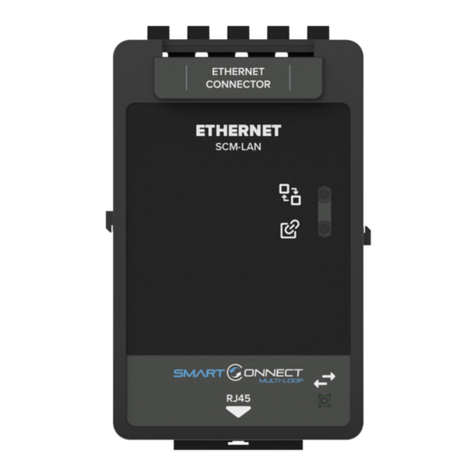
Zeta Alarm Limited
Zeta Alarm Limited SmartConnect Multiloop instruction manual
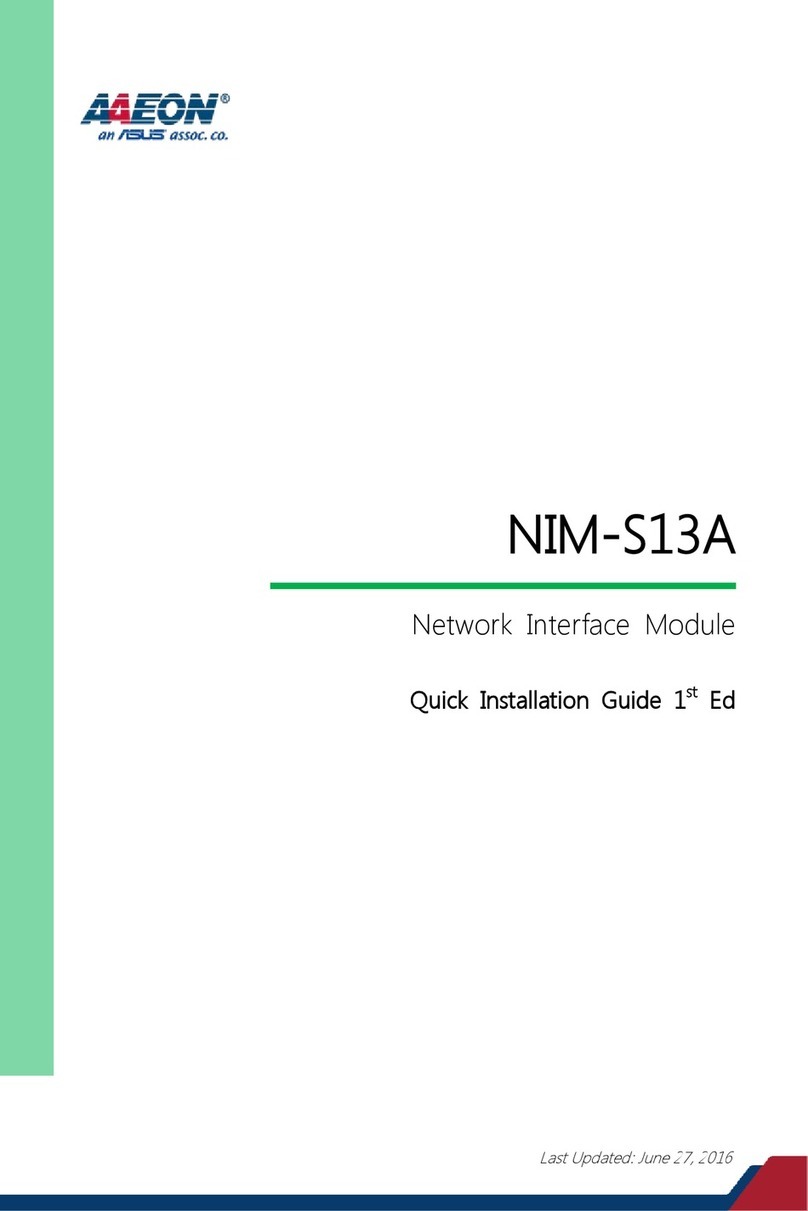
Asus
Asus AAEON NIM-S13A Quick installation guide

Siemens
Siemens 3VM9.88-0LB10 operating instructions
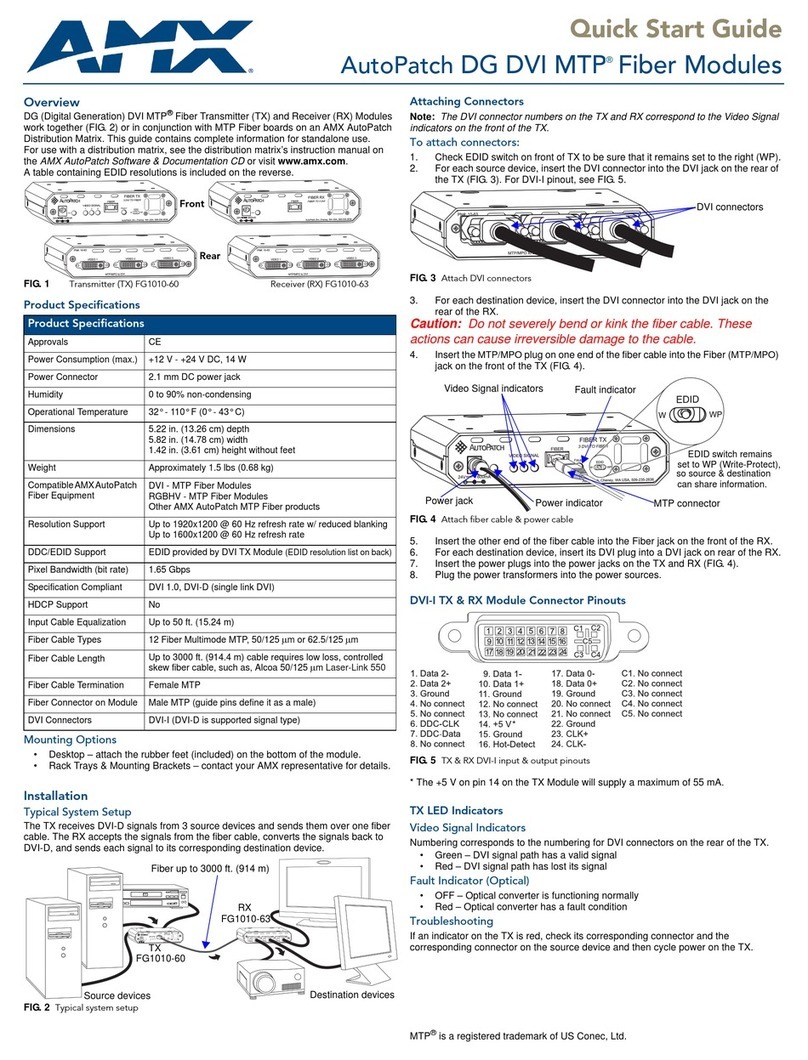
AMX
AMX DG DVI MTP quick start guide
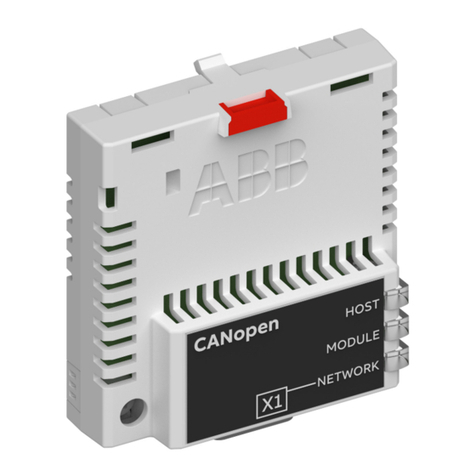
ABB
ABB FCAN-01 Quick installation and start-up guide
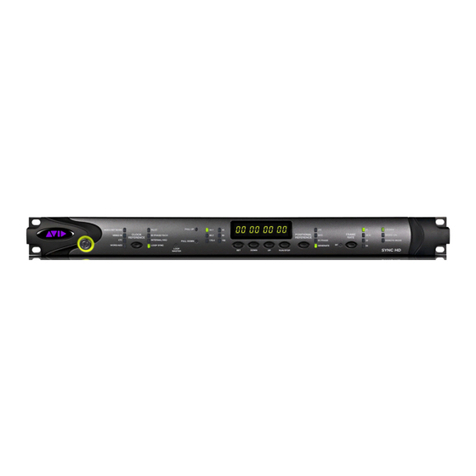
Avid Technology
Avid Technology Pro Tools SYNC HD Guide
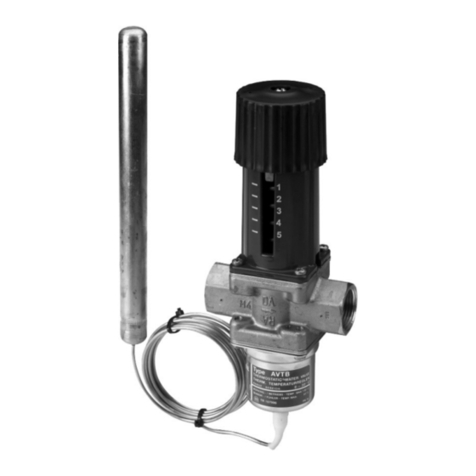
Danfoss
Danfoss AVTB installation guide

SOMFY
SOMFY MATIC Series Installation and operation instructions
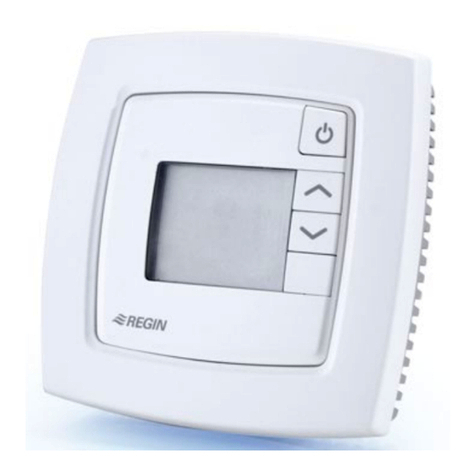
Regin
Regin ED-RU-DO Instruction

White Rodgers
White Rodgers 1311 installation instructions
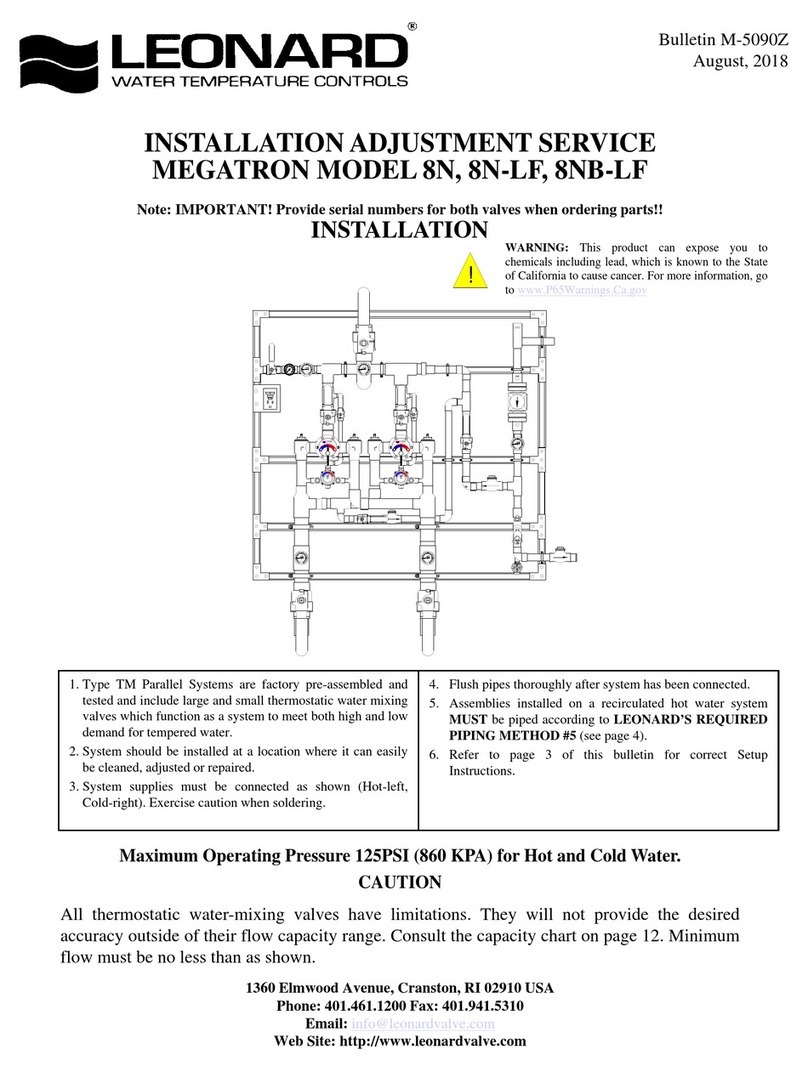
Leonard
Leonard MEGATRON 8N INSTALLATION ADJUSTMENT SERVICE
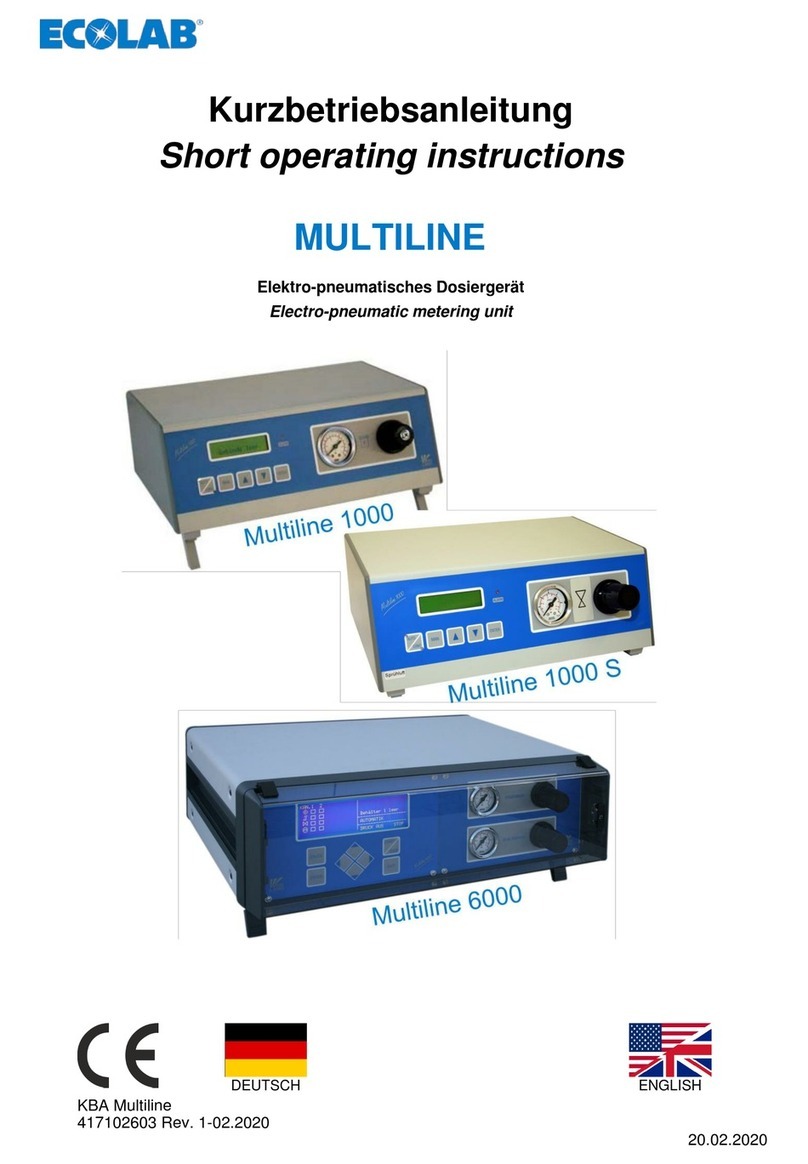
Ecolab
Ecolab MULTILINE 1000 Short operating instructions
